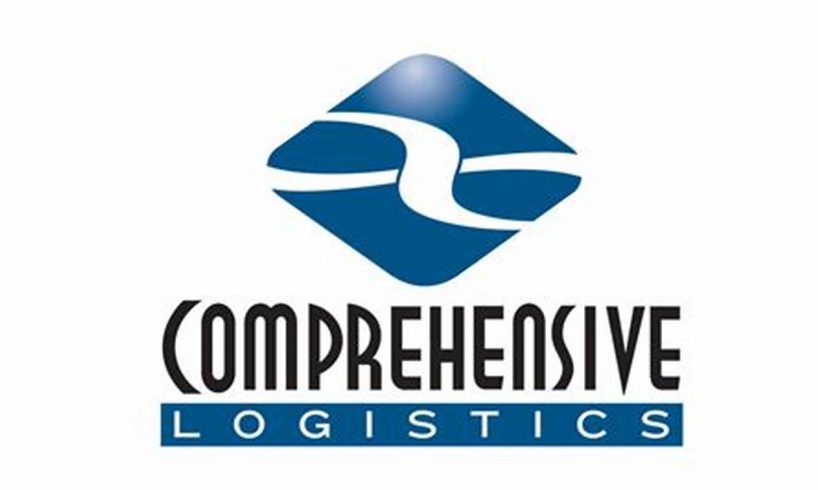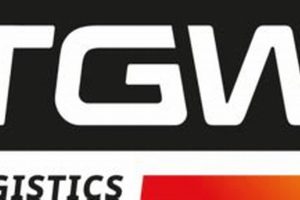
Comprehensive logistics refers to the end-to-end management of all the activities involved in moving goods from their point of origin to their final destination. It encompasses various aspects, including planning, organizing, implementing, and controlling the flow of goods, services, and information. Comprehensive logistics plays a crucial role in ensuring that the right product reaches the right place, at the right time, and at the right cost.
The importance of comprehensive logistics cannot be overstated. It helps businesses optimize their supply chains, reduce costs, improve customer service, and gain a competitive advantage. Moreover, comprehensive logistics contributes to economic growth by facilitating seamless trade and commerce. Throughout history, advancements in logistics have been instrumental in shaping global trade patterns and driving economic progress.
In today’s dynamic business environment, comprehensive logistics is more critical than ever. With the rise of e-commerce, globalization, and just-in-time manufacturing, businesses need to have a robust and efficient logistics system in place to meet the demands of their customers and stay ahead of the competition.
1. Planning
Planning is a critical component of comprehensive logistics. It involves developing a strategy to optimize the movement of goods from their origin to their final destination. This includes taking into account factors such as the type of goods being transported, the distance they need to travel, the time frame for delivery, and the cost of transportation. Effective planning can help businesses reduce costs, improve customer service, and gain a competitive advantage.
One of the key benefits of planning is that it can help businesses avoid costly mistakes. For example, a business that fails to plan for the transportation of perishable goods may end up losing its entire shipment if the goods are not delivered on time. Planning can also help businesses identify and mitigate risks. For example, a business that is planning to ship goods to a foreign country may need to research the country’s import regulations to avoid delays or fines.
In addition to helping businesses avoid costly mistakes and mitigate risks, planning can also help businesses improve customer service. By planning ahead, businesses can ensure that their customers receive their goods on time and in good condition. This can lead to increased customer satisfaction and loyalty.
Finally, planning can help businesses gain a competitive advantage. By optimizing their supply chains, businesses can reduce costs and improve efficiency. This can give them a competitive advantage over businesses that are not as efficient.
Overall, planning is a critical component of comprehensive logistics. By taking the time to plan ahead, businesses can reduce costs, improve customer service, and gain a competitive advantage.
2. Organization
Organization is a critical component of comprehensive logistics. It involves establishing a system to manage the flow of goods from their origin to their final destination. This includes developing processes for receiving, storing, and shipping goods, as well as for tracking inventory and managing orders. An organized logistics system can help businesses improve efficiency, reduce costs, and improve customer service.
- Inventory management: Keeping track of inventory levels is essential for ensuring that businesses have the right products in stock to meet customer demand. Inventory management systems can help businesses track inventory levels in real time, so that they can avoid stockouts and overstocking.
- Order management: Order management systems help businesses track the status of orders from the moment they are placed until they are delivered to the customer. This can help businesses identify and resolve any problems that may arise during the order fulfillment process.
- Warehouse management: Warehouse management systems help businesses manage the storage and movement of goods within their warehouses. This can help businesses optimize their warehouse space and improve the efficiency of their picking and packing operations.
- Transportation management: Transportation management systems help businesses plan and execute the transportation of goods from one location to another. This can help businesses find the most cost-effective and efficient shipping methods.
By investing in an organized logistics system, businesses can improve their efficiency, reduce costs, and improve customer service. This can lead to increased profitability and a competitive advantage.
3. Implementation
Implementation is a critical component of comprehensive logistics. It involves executing the plan that was developed during the planning phase and managing the movement of goods from their origin to their final destination. This includes coordinating with suppliers, carriers, and other stakeholders to ensure that goods are delivered on time, in good condition, and at the right cost.
Effective implementation requires a high level of coordination and communication between all parties involved in the logistics process. This can be challenging, especially for businesses that have complex supply chains or that operate in multiple countries. However, effective implementation is essential for ensuring that goods are delivered to customers on time and in good condition.
One of the key benefits of effective implementation is that it can help businesses reduce costs. By coordinating with suppliers and carriers, businesses can negotiate better rates and avoid unnecessary delays. Additionally, effective implementation can help businesses improve customer service by ensuring that goods are delivered on time and in good condition.
Overall, implementation is a critical component of comprehensive logistics. By effectively implementing their logistics plans, businesses can reduce costs, improve customer service, and gain a competitive advantage.
4. Control
Control is a critical component of comprehensive logistics. It involves monitoring the progress of the plan and making adjustments as needed to ensure that goods are delivered to customers on time, in good condition, and at the right cost.
Effective control requires a real-time view of the logistics process. This can be achieved through the use of technology, such as GPS tracking and inventory management systems. By monitoring the progress of shipments, businesses can identify and resolve any problems that may arise. For example, if a shipment is delayed, the business can work with the carrier to find an alternative route or mode of transportation.
In addition to monitoring the progress of shipments, businesses also need to monitor their inventory levels. This is important to ensure that businesses have the right products in stock to meet customer demand. If inventory levels are too low, businesses may experience stockouts, which can lead to lost sales and unhappy customers. If inventory levels are too high, businesses may tie up too much cash in inventory, which can lead to financial problems.
By effectively controlling the logistics process, businesses can improve customer service, reduce costs, and gain a competitive advantage.
5. Transportation
Transportation is a critical component of comprehensive logistics. It involves the movement of goods from one location to another, and it can be accomplished through a variety of methods, including trucking, rail, air, and water. The choice of transportation method depends on a number of factors, including the type of goods being transported, the distance they need to travel, and the cost of transportation.
- Cost: The cost of transportation is a major factor in the choice of transportation method. Trucking is typically the most cost-effective option for short distances, while rail is more cost-effective for longer distances. Air transportation is the most expensive option, but it is also the fastest.
- Speed: The speed of transportation is another important factor to consider. Air transportation is the fastest option, but it is also the most expensive. Rail transportation is slower than air transportation, but it is also less expensive. Trucking is the slowest option, but it is also the most cost-effective.
- Reliability: The reliability of transportation is also important to consider. Air transportation is the most reliable option, but it is also the most expensive. Rail transportation is less reliable than air transportation, but it is also less expensive. Trucking is the least reliable option, but it is also the most cost-effective.
- Flexibility: The flexibility of transportation is also important to consider. Trucking is the most flexible option, as it can be used to transport goods to a variety of locations. Rail transportation is less flexible than trucking, as it is limited to fixed routes. Air transportation is the least flexible option, as it is only available at airports.
The choice of transportation method is a complex one, and there is no one-size-fits-all solution. Businesses need to consider a number of factors when choosing a transportation method, including the type of goods being transported, the distance they need to travel, the cost of transportation, the speed of transportation, the reliability of transportation, and the flexibility of transportation.
6. Warehousing
Warehousing is an integral part of comprehensive logistics, as it involves managing and storing goods until they are needed for distribution. Without proper warehousing, businesses would not have the space to store their products or the ability to manage their inventory effectively.
- Inventory Management: Warehousing plays a crucial role in inventory management by providing a central location for businesses to store and track their inventory. This allows businesses to maintain accurate inventory levels, reducing the risk of stockouts or overstocking.
- Order Fulfillment: Warehousing is essential for efficient order fulfillment, as it ensures that goods are available for quick and accurate delivery to customers. By storing goods in a central location, businesses can reduce shipping times and improve customer satisfaction.
- Cost Reduction: Warehousing can help businesses reduce costs by allowing them to take advantage of economies of scale. By storing goods in bulk, businesses can negotiate better prices with suppliers and reduce transportation costs.
- Risk Management: Warehousing provides businesses with a secure location to store their goods, reducing the risk of theft, damage, or loss. By implementing proper security measures, businesses can protect their inventory and minimize the risk of financial losses.
Overall, warehousing is a critical component of comprehensive logistics that supports businesses in managing their inventory, fulfilling orders efficiently, reducing costs, and mitigating risks. By leveraging the benefits of warehousing, businesses can streamline their supply chain operations and improve their overall performance.
7. Inventory management
Inventory management is a critical aspect of comprehensive logistics, encompassing the tracking and management of goods throughout the supply chain. It plays a pivotal role in ensuring that businesses have the right products, in the right quantities, at the right time.
- Optimizing Stock Levels: Inventory management helps businesses optimize their stock levels, avoiding both overstocking and stockouts. By accurately tracking inventory, businesses can minimize the risk of losing sales due to stockouts and reduce the costs associated with holding excess inventory.
- Efficient Order Fulfillment: Effective inventory management supports efficient order fulfillment by ensuring that the required goods are available when and where they are needed. This reduces order fulfillment lead times, improves customer satisfaction, and enhances the overall efficiency of the supply chain.
- Cost Reduction: Inventory management contributes to cost reduction by helping businesses minimize waste and optimize inventory carrying costs. Through accurate tracking and forecasting, businesses can avoid purchasing excess inventory, reducing storage and handling costs, and minimizing the risk of obsolete or damaged goods.
- Risk Management: Inventory management plays a crucial role in risk management by providing visibility into stock levels and identifying potential risks. By monitoring inventory levels, businesses can proactively address disruptions, mitigate supply chain risks, and ensure business continuity.
In summary, inventory management is a fundamental component of comprehensive logistics that enables businesses to optimize stock levels, improve order fulfillment efficiency, reduce costs, and enhance risk management capabilities. By effectively tracking and managing inventory, businesses can gain a competitive advantage and improve their overall supply chain performance.
8. Customer service
Customer service is a critical component of comprehensive logistics, ensuring that customers receive a positive and seamless experience throughout the logistics process. It involves providing support and assistance to customers at every stage, from order placement to delivery and beyond.
- Proactive Communication: Comprehensive logistics providers proactively communicate with customers, keeping them informed about the status of their orders, any delays or issues, and estimated delivery times. This transparency builds trust and reduces customer anxiety.
- Personalized Support: Customer service representatives are trained to provide personalized support, understanding each customer’s unique needs and requirements. They offer tailored solutions and go the extra mile to ensure customer satisfaction.
- Issue Resolution: Inevitably, issues may arise during the logistics process. Comprehensive logistics providers have robust systems in place to quickly and efficiently resolve customer issues. They work closely with customers to find solutions and minimize disruptions.
- Post-Delivery Follow-up: Customer service extends beyond delivery. Comprehensive logistics providers follow up with customers to ensure satisfaction, gather feedback, and identify areas for improvement. This ongoing support fosters long-term relationships and builds customer loyalty.
By providing exceptional customer service throughout the logistics process, comprehensive logistics providers differentiate themselves in the market and enhance the overall customer experience. They recognize that customer satisfaction is not just an afterthought but an integral part of delivering a seamless and efficient logistics solution.
9. Technology
Technology plays a vital role in comprehensive logistics, enhancing its efficiency, effectiveness, and overall performance. By leveraging advanced technologies, logistics providers can streamline operations, reduce costs, improve visibility, and provide better customer service.
- Data Analytics and Business Intelligence: Comprehensive logistics providers use data analytics and business intelligence tools to gain insights into their operations, identify inefficiencies, and make data-driven decisions. This enables them to optimize routes, reduce transit times, and improve inventory management.
- Warehouse Management Systems (WMS): WMSs provide real-time visibility into warehouse operations, enabling logistics providers to manage inventory levels, optimize storage space, and improve picking and packing processes. This leads to increased efficiency, reduced errors, and faster order fulfillment.
- Transportation Management Systems (TMS): TMSs help logistics providers plan, execute, and track shipments, providing real-time visibility and control over the transportation process. This allows for better route optimization, carrier selection, and proactive exception handling, resulting in reduced transit times and improved customer satisfaction.
- Mobile Technology: Mobile devices and applications empower logistics professionals with real-time information and tools to manage operations on the go. They can track inventory, update order statuses, and communicate with drivers and customers, improving efficiency and providing better visibility.
In conclusion, technology is an integral part of comprehensive logistics, enabling providers to optimize operations, improve efficiency, reduce costs, and enhance customer service. By embracing and leveraging advanced technologies, logistics providers can gain a competitive advantage and deliver a seamless and efficient logistics experience.
FAQs on Comprehensive Logistics
This section addresses commonly asked questions and misconceptions about comprehensive logistics, providing clear and informative answers.
Question 1: What is the primary objective of comprehensive logistics?
Comprehensive logistics aims to optimize the movement of goods from origin to destination, ensuring they reach the right place, at the right time, and at the right cost. It encompasses planning, organizing, implementing, and controlling all logistics activities to enhance supply chain efficiency and customer satisfaction.Question 2: How does comprehensive logistics differ from traditional logistics approaches?
Comprehensive logistics takes a holistic approach, considering every aspect of the supply chain. It goes beyond traditional logistics, which primarily focused on transportation and warehousing, to include inventory management, customer service, technology, and data analytics. This integrated approach enables businesses to optimize the entire logistics process, reducing costs and improving efficiency.Question 3: What are the key benefits of implementing comprehensive logistics?
Comprehensive logistics offers numerous benefits, including reduced costs through optimized operations, improved customer service due to timely and accurate deliveries, enhanced visibility and control over the supply chain, increased flexibility to adapt to changing market demands, and improved overall supply chain efficiency.Question 4: How can businesses measure the effectiveness of their comprehensive logistics strategies?
Businesses can evaluate the effectiveness of their comprehensive logistics strategies by tracking key performance indicators (KPIs) such as inventory turnover, order fulfillment lead times, customer satisfaction levels, and logistics costs. Regular monitoring and analysis of these KPIs help identify areas for improvement and ensure continuous enhancement of the logistics process.Question 5: What are the common challenges faced in implementing comprehensive logistics?
Implementing comprehensive logistics can present challenges such as integrating diverse systems and technologies, managing complex supply chains with multiple stakeholders, ensuring data accuracy and visibility across the organization, and adapting to rapidly changing market conditions. Overcoming these challenges requires careful planning, collaboration, and a commitment to continuous improvement.Question 6: How is technology transforming the field of comprehensive logistics?
Technology plays a vital role in modern comprehensive logistics. Advanced technologies such as data analytics, artificial intelligence, and the Internet of Things (IoT) are enabling real-time visibility, predictive analytics, automated decision-making, and enhanced collaboration among supply chain partners. These technological advancements are driving innovation and transforming the logistics industry.
In summary, comprehensive logistics provides businesses with a holistic approach to managing their supply chains, optimizing operations, reducing costs, and enhancing customer service. By addressing common questions and misconceptions, this FAQ section aims to foster a clear understanding of comprehensive logistics and its significance in the modern business landscape.
Transition to the next article section: Comprehensive logistics is not just a buzzword; it’s a strategic imperative for businesses looking to gain a competitive edge in today’s dynamic market environment. Embracing comprehensive logistics principles can transform supply chains, drive efficiency, and ultimately lead to increased profitability and customer satisfaction.
Comprehensive Logistics Tips
Implementing comprehensive logistics strategies can significantly improve supply chain efficiency and customer satisfaction. Here are five essential tips to consider:
Tip 1: Plan and Optimize: Develop a comprehensive logistics plan that encompasses all aspects of the supply chain, from inventory management to transportation and customer service. Optimize routes, inventory levels, and resources to minimize costs and improve efficiency.
Tip 2: Leverage Technology: Utilize technology solutions such as warehouse management systems, transportation management systems, and data analytics tools to enhance visibility, automate processes, and make data-driven decisions. This can streamline operations, reduce errors, and improve overall supply chain performance.
Tip 3: Collaborate with Partners: Foster strong relationships with suppliers, carriers, and other supply chain partners. Open communication and collaboration can improve coordination, reduce delays, and identify opportunities for optimization.
Tip 4: Monitor and Measure: Establish key performance indicators (KPIs) to track the effectiveness of your logistics strategies. Regularly monitor and analyze these KPIs to identify areas for improvement and ensure continuous enhancement of your supply chain.
Tip 5: Adapt and Innovate: The logistics landscape is constantly evolving. Stay abreast of industry trends and best practices. Be willing to adapt your strategies and embrace innovation to maintain a competitive edge and meet changing customer demands.
By following these tips, businesses can harness the full potential of comprehensive logistics and achieve significant improvements in supply chain efficiency, cost reduction, and customer satisfaction.
Conclusion: Implementing comprehensive logistics strategies is not merely a buzzword but a strategic imperative for businesses seeking to gain a competitive advantage. Embrace these tips to transform your supply chain, drive efficiency, and ultimately lead to increased profitability and customer loyalty.
Conclusion
This exploration of comprehensive logistics has shed light on its critical role in optimizing supply chains, reducing costs, and enhancing customer satisfaction. By adopting a comprehensive approach that encompasses all aspects of the supply chain, businesses can gain a competitive edge and achieve operational excellence.
The key to successful implementation lies in careful planning, effective collaboration, and continuous improvement. By leveraging technology, monitoring performance, and adapting to evolving industry trends, businesses can harness the full potential of comprehensive logistics. This strategic imperative empowers businesses to navigate the complexities of the modern supply chain landscape, drive innovation, and ultimately achieve sustainable growth and profitability.






